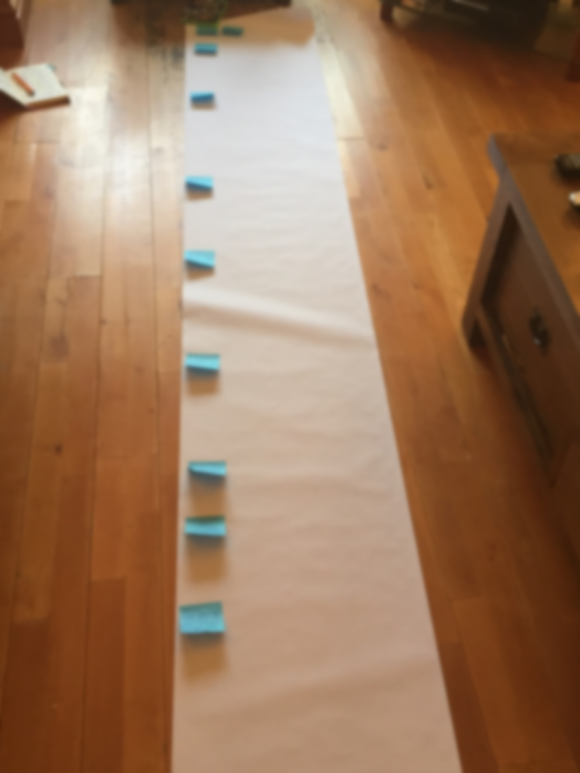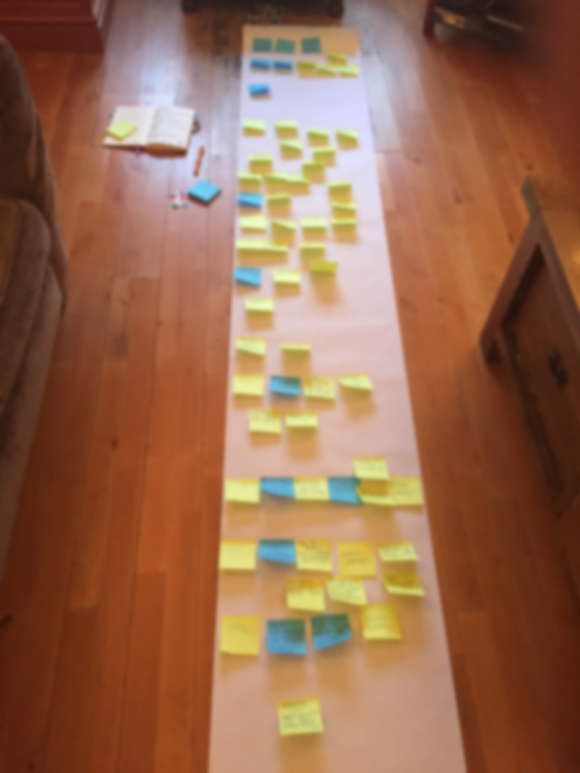Now! The All-New Plan-O-Matic!
Last week I had a Virtual Retreat at home, in an attempt to recreate the Retreats For You experience at a time of low cash and even lower childcare options. I also needed lots of my own things around me – as you will see below – for the work I hoped I’d do on my next book. (This isn’t Vigilante but the one after that; such is the long lead time for novels that you’re often working on the next one before the current one is published.) The rules were these:
- I do a minimum of domestic labour.
- I do what the hell I want all week.
- I eat what I want.
- I give myself permission to ignore duty.
So I set up a holiday reply on my email, instructed the children to make nice, eschewed social media and laid down a stock of cook-chill meals and chocolate-covered brazil nuts.

The bad news, after all that prep, is that it the only retreat worth the name is the one that has you leaving your home behind. I found it extraordinarily difficult to ignore urgent emails and my kids’ homework-related crapness. People still rang me, or knocked on the door. Stuff still came up. The good news is that I discovered the value – and the joy – of the Do What The Hell I Want bit. I’m quite duty-driven. I rarely give myself permission to freewheel, and I did worry that a week in which I placed no pressure on myself would be a wasted one, workwise. But actually, once I’d liberated myself to do what I wanted, it turns out that what I mostly wanted was to write. I cracked through a ton of work (and that’s including the day I spent mainly in bed catching up with Serial). There’s probably a self-help book in this somewhere.
I’m going to share with you one thing I did last week, which worked really well as a planning tool. For me, there’s a bit of a Three Bears thing about planning. Jubilee I under-planned, and had to massively restructure as a result. Vigilante was originally over-planned (it has a somewhat intricate plot, and I didn’t want to drop the ball), so I had to go back in and loosen it all up in the edit. This time I’m going for the baby bear option: a clear direction of travel plotwise, but nothing blow-by-blow, a sort of spine on which I can put flesh as I write. To achieve this I’ve invented the Plan-O-Matic ™, an innovation I feel sure will prove as commercially successful as my groundbreaking Chapt-O-Matic ™. Global patents have already been applied for, so watch your step.
For the Plan-O-Matic™ you will need:
- A roll of easel paper
- A pen
- A notebook containing a hotchpotch of ideas for your story
- Post-It notes in different colours
- A long stretch of floor
- Music
To set up your Plan-O-Matic:
Make a cup of tea and put on your chosen music. Unroll the easel paper thus:
Decide what the different elements of your story are, in terms of plot (at its simplest, this might be a main plot and a subplot) and assign a different Post-It colour to each one. For the particular book I’m planning, the subplot acts as an anchor for the main, so it actually needs to go down first. I did a blue note for each idea I’d had for that subplot and – no matter how haphazardly I’d written those ideas down in my notebook – I stuck them on the paper in the order that will make sense in the final story. Like this:

Then I assigned a new note colour for the main plot (yellow), and transferred all those ideas to notes, and put them down in the order which made sense for the story. Because the notes are repositionable, I could move them round endlessly, and shift whole sections up and down the easel paper if it became clear that one part of the book was more full of ideas at the moment than others. After that, it looked like this, and I needed a few more chocolate brazils:

Finally, I realised that for me there was a third element – the ideas and themes that underpin certain moments in the story – and I wanted to note them down as well, so that when I come to write the novel I’ll have them front of mind. I did them in orange, but forgot to take a picture.
The final step is to cut the easel paper where the plot ends and fold (fold! Don’t roll!) the plot up, concertina style, so you can unfold it as you write. And that’s it: my next novel, in notes, in order. Not too prescriptive, not too nebulous; I’m hoping this one is just right.
How long did it take? It took two full plays of Ziggy, one of Aladdin Sane, and one side of Ladies of the Canyon.